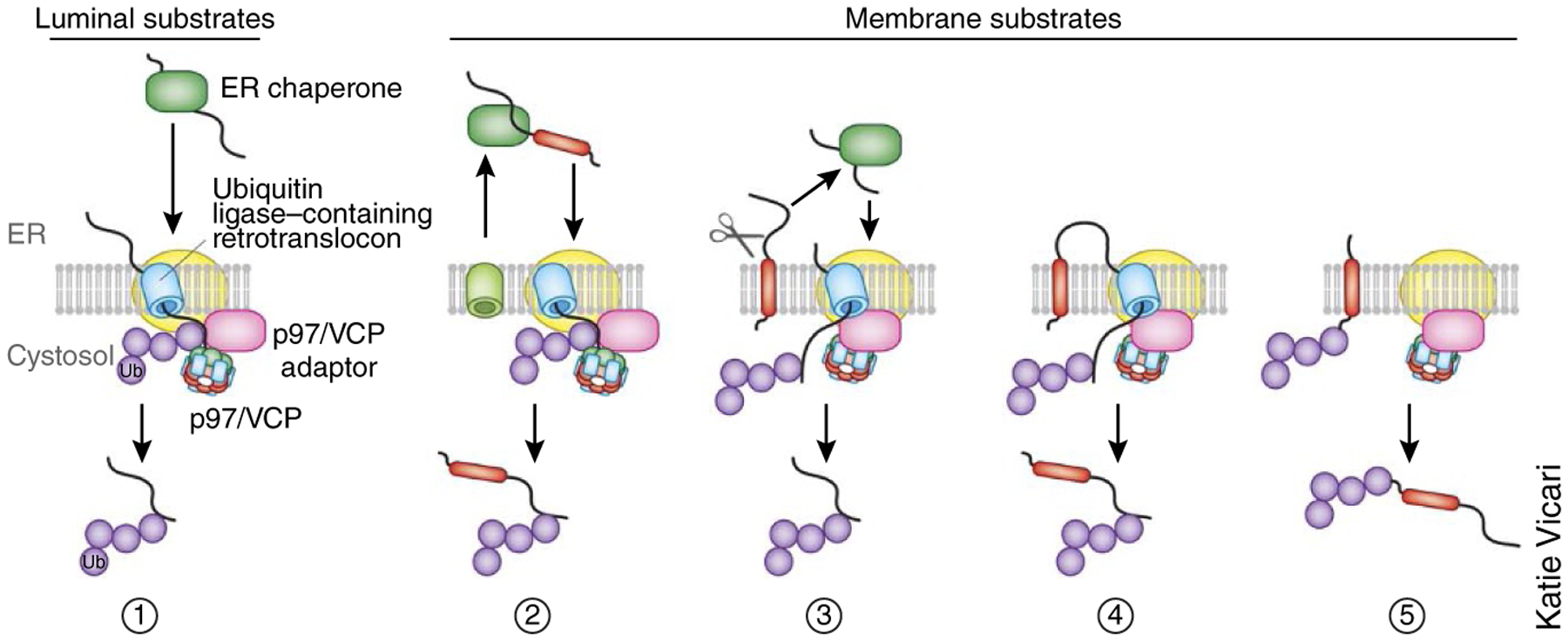Figure 1.

Distinct modes of retrotranslocation. Retrotranslocation can occur in principle via the following modes. (1) A luminal substrate must first be inserted into the ER membrane in a process that is probably facilitated by a membrane-bound retrotranslocon component. Once a portion of the substrate has been exposed to the cytosol, the ubiquitination machinery can access it to facilitate its ubiquitination and subsequent dislocation from the membrane. Retrotranslocation of membrane proteins may proceed via several routes. Ub, ubiquitin. (2) Type I membrane proteins containing charged residues in their TM domain might be completely translocated into the ER lumen and then retrotranslocated similarly to a luminal substrate. (3) Some membrane proteins may first be processed by an intramembranous protease to release its luminal domain, which is then retrotranslocated. (4) Some membrane proteins may translocate their ER-luminal domain out of the ER first via a proteinaceous channel, which is then ubiquitinated and pulled out of the membrane. The TM domain may enter the channel via a lateral gate before being dislocated from the membrane. (5) Some membrane proteins may be ubiquitinated in their cytosolic domain and then pulled into a proteinaceous channel before release from the ER membrane.
